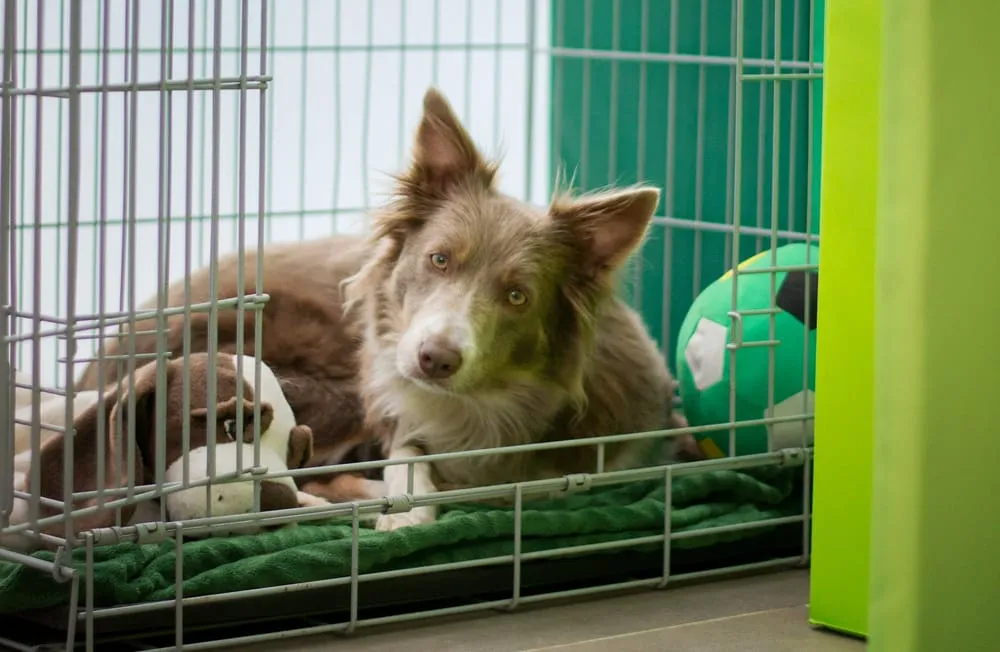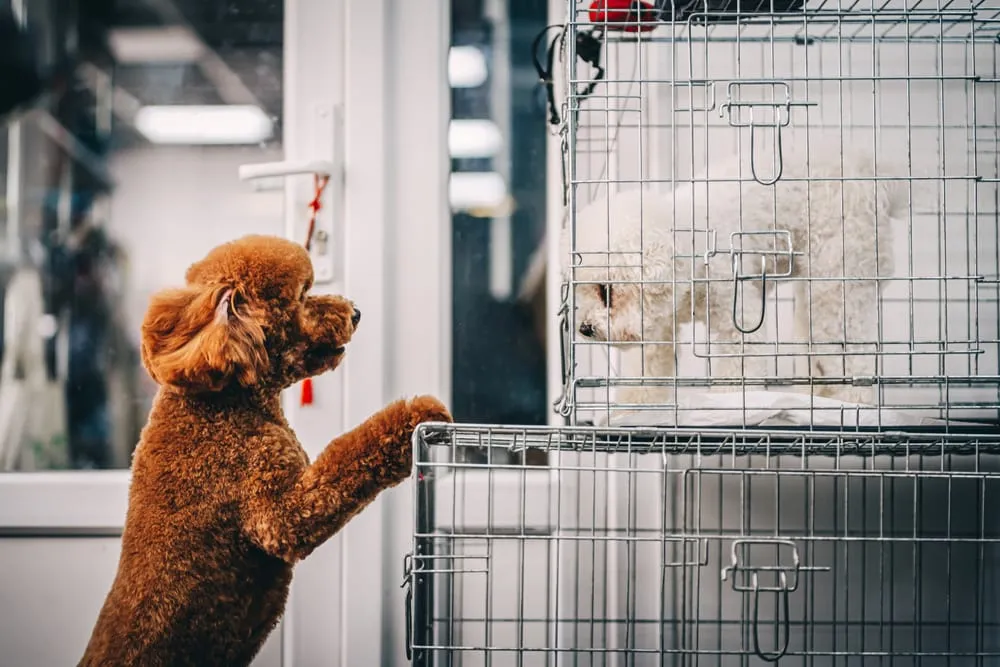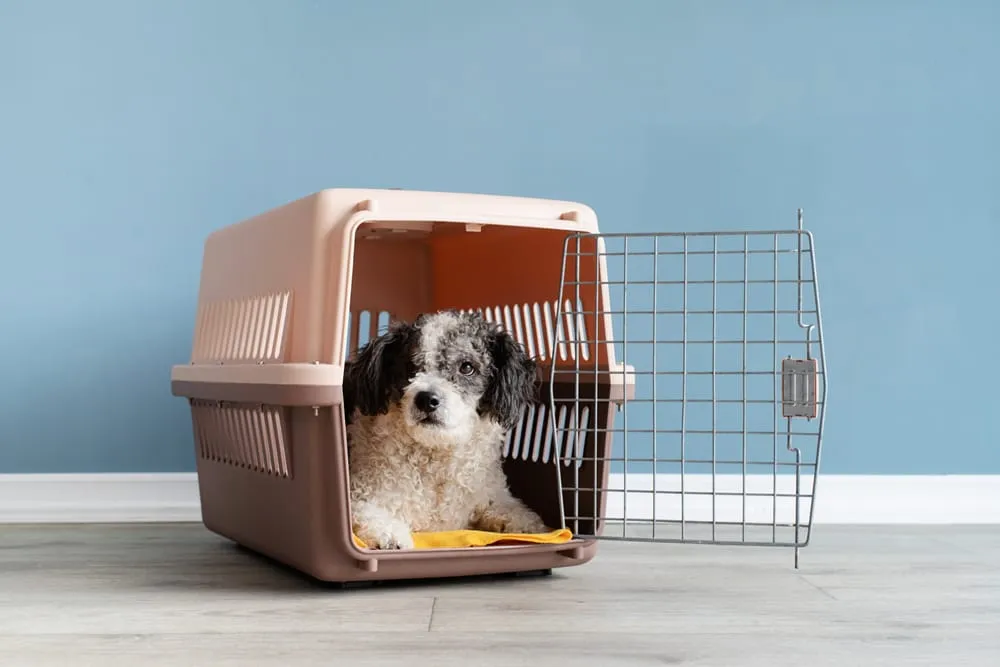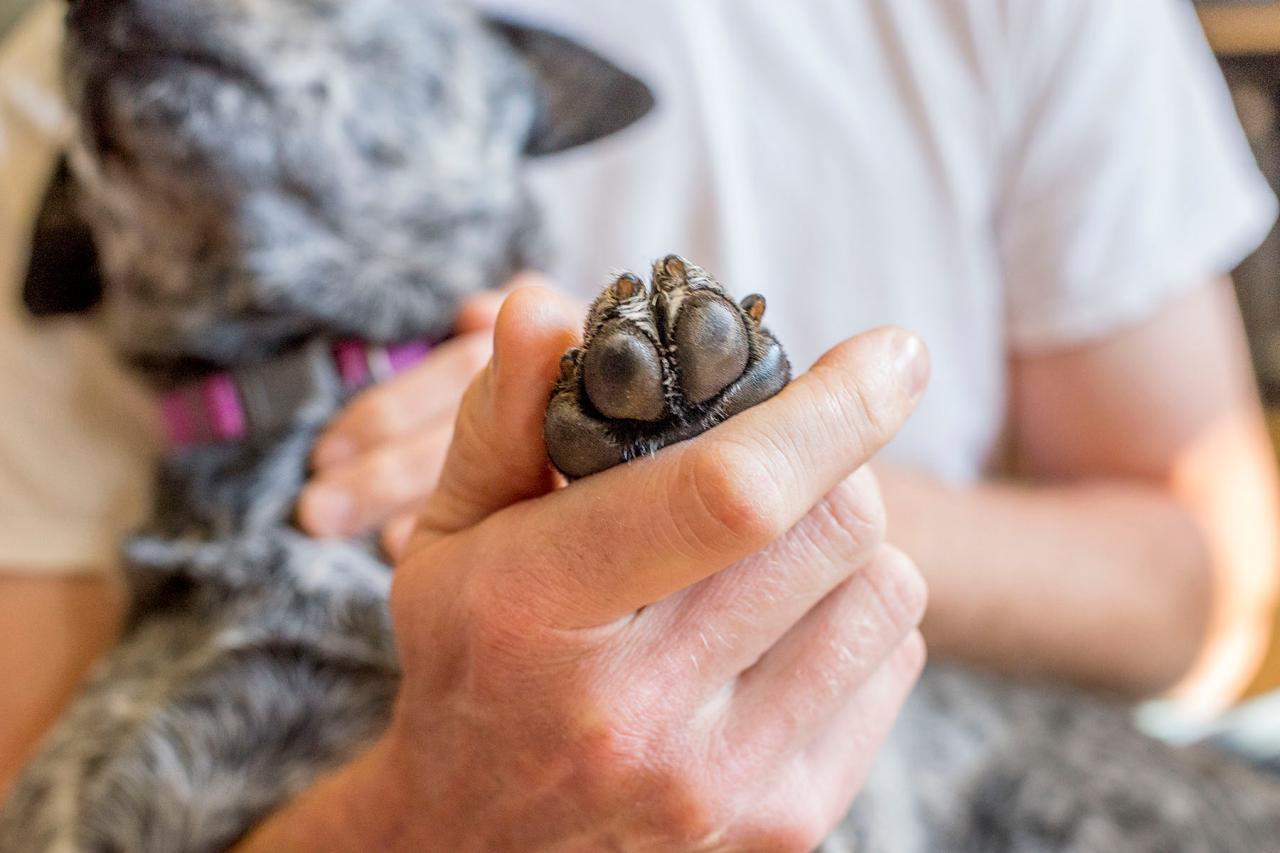Got a new puppy? They have a lot to learn, but one of the first things you should teach them is how to use their crate! Fi's professional dog trainer, Or Nessim, is teaching us how we can crate train our puppies.

Crate training is a widely recommended method for establishing a safe and comforting environment for puppies while promoting good habits and facilitating house training. At its core, crate training involves teaching your puppy to accept a crate as a secure, personal space where they can rest and retreat. This method harnesses a dog's natural instinct to seek a den-like area for solitude and rest, turning the crate into a familiar and reassuring space rather than a place of isolation.
For dog owners, the benefits are multifold: it aids in preventing destructive behaviors, assists in managing separation anxiety, and simplifies travel with pets. Moreover, it is an invaluable tool in establishing a routine for puppies, helping them learn to control their bladder and understand the boundaries within the home. However, the effectiveness of crate training hinges on the approach taken—patience, consistency, and a positive reinforcement-based method are key. By incorporating these elements, dog owners can ensure that crate training is a positive and rewarding experience for their furry companions.
Understanding Crate Training
Crate training, at its essence, is a method grounded in the natural instincts of dogs. It involves teaching a puppy to use a crate as a familiar and secure place, akin to the dens their wild ancestors used. This method is not about confinement but about creating a personal sanctuary where the puppy feels safe and comfortable. The crate becomes a space where the puppy can relax undisturbed, offering a sense of security that is crucial for their mental well-being.
The philosophy behind crate training is deeply rooted in providing structure and safety. It leverages a dog's instinctual desire for a den-like space, allowing them to develop a positive association with the crate as their own private area. This training approach is especially beneficial for puppies as it aids in establishing a routine, significantly easing the process of house training. By confining the puppy to a crate with controlled access to the rest of the house, it becomes easier to teach them where and when it's appropriate to relieve themselves.

Moreover, crate training is invaluable for a puppy's overall sense of security. In a world that can be overwhelming with its vastness and unpredictability, a crate offers a retreat to a known, controlled environment. This security is crucial during the formative months of a puppy's life, as it lays the foundation for a confident, well-adjusted adult dog. By understanding and implementing crate training effectively, owners can provide their puppies with a sense of comfort and safety while also promoting good behavior and ease of house training.
Choosing the Right Crate
Selecting the right crate is pivotal for the success of crate training, ensuring your puppy's comfort and safety. The crate should be large enough for your puppy to stand up, turn around, and lie down comfortably, yet cozy enough to provide a sense of security. As puppies grow, adjustable crates with dividers can adapt to their changing size. Opt for a sturdy, well-ventilated crate, considering materials like metal for durability and ease of cleaning, or plastic for a more enclosed, den-like feel. Ensure there are no sharp edges or parts that could harm your puppy. Soft bedding can enhance comfort, but avoid materials your puppy might chew. Prioritize crates with secure latches to prevent escapes, safeguarding your puppy's safety while inside.
Introducing Your Puppy to the Crate
Introducing your puppy to the crate requires a gentle and positive approach to ensure they perceive it as a safe and enjoyable space. Begin by placing the crate in a common area where the family spends a lot of time, keeping the door open to allow your puppy to explore it at their own pace. Enhance the appeal of the crate by placing soft bedding inside and dropping in a few treats or toys to encourage investigation and entry.

The second step involves associating the crate with positive experiences. Start feeding your puppy their regular meals near the crate, gradually moving the food bowl inside. This helps your puppy associate the crate with the pleasant experience of eating, reinforcing a positive connection with the space.
Finally, encourage your puppy to spend short periods in the crate during the day. Start with brief intervals when they are likely to nap or are calm. You can use treats to coax them inside, and then quietly close the door. Stay nearby initially to provide reassurance. Gradually increase the time your puppy spends in the crate, always ensuring they are comfortable and relaxed. This gradual acclimation helps your puppy learn that the crate is a safe space for rest and solitude, laying the foundation for successful crate training.
Crate Training Schedule
A structured crate training schedule is essential for helping your puppy adapt to their new routine both during the day and at night. Start with short, 10-15 minute sessions a few times a day while your puppy is calm or after playtime, gradually increasing the duration as they become more comfortable. Ensure your puppy has had a chance to relieve themselves before each crate session to prevent accidents.
For night-time training, place the crate in your bedroom or nearby so your puppy doesn't feel isolated. Begin by letting them sleep in the crate for a few hours at a time, gradually extending this until they can sleep through the night. It's normal for young puppies to need bathroom breaks during the night, so be prepared for some interrupted sleep in the early stages.
It's crucial to increase crate time gradually to ensure your puppy remains comfortable and views the crate as a positive space. Avoid leaving your puppy in the crate for too long too soon, as this can lead to anxiety and resistance to crate training. With patience and a consistent schedule, your puppy will learn to enjoy their time in the crate, making it a seamless part of their daily routine.

Dealing with Whining and Barking
Whining and barking are common challenges faced during crate training, often stemming from a puppy's discomfort, separation anxiety, or the need for a bathroom break. Addressing these issues requires patience and strategic responses to ensure you don't inadvertently reinforce the behavior.
Firstly, ensure your puppy's basic needs are met before crating—such as going to the bathroom, getting enough exercise, and having access to water. If whining or barking starts, assess quietly to rule out genuine needs. If the puppy simply seeks attention, resist the urge to immediately let them out, as this teaches them that making noise is an effective way to be released.
Instead, wait for a moment of silence before opening the crate to avoid reinforcing the noise-making behavior. You can also introduce a "quiet" command during training sessions, rewarding your puppy when they obey to encourage silence.
For persistent barkers, covering the crate with a light blanket can help reduce visual stimuli, promoting calmness. Additionally, consider leaving a gently worn piece of your clothing in the crate to comfort your puppy with your scent.
Remember, consistency is key. Responding the same way to whining or barking ensures your puppy learns what is expected, gradually reducing these behaviors as they become more accustomed to their crate.
Crate Training Do's and Don'ts
| Do's | Don'ts |
|---|---|
| Introduce the crate gradually with positive reinforcement. | Use the crate as punishment. |
| Maintain a positive association with treats and praise. | Leave your puppy in the crate for too long without breaks. |
| Establish a consistent routine for crating and breaks. | Ignore signs of distress or discomfort. |
| Ensure the crate is comfortable and appropriately sized. | Rush the crate training process or force your puppy into the crate. |
| Remain patient and consistent throughout the training. |
Conclusion
Successful crate training hinges on patience, consistency, and a positive approach, gradually acclimating your puppy to view the crate as a safe haven. Key to this process is introducing the crate gently, maintaining a positive association through treats and praise, and establishing a routine that includes regular breaks.
Remember, the crate is not a tool for punishment but a space for security and tranquility. By adhering to these principles, you'll not only foster a well-adjusted pet but also enjoy the peace of mind that comes with knowing your puppy is comfortable and content in their own space. Embrace this journey with patience, and the rewards will be well worth the effort, leading to a happier, more harmonious relationship with your furry friend.






